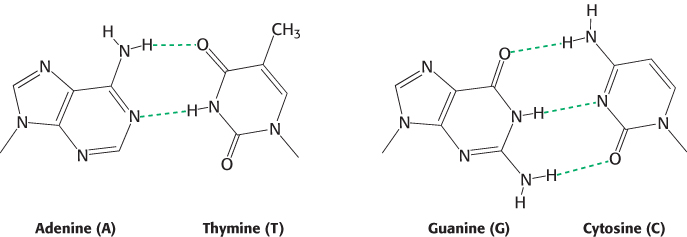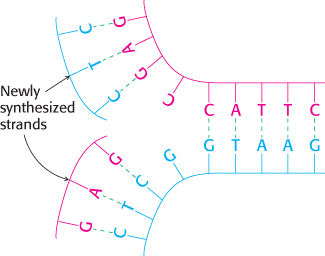1.2DNA Illustrates the Interplay Between Form and Function
DNA Illustrates the Interplay Between Form and Function
A fundamental biochemical feature common to all cellular organisms is the use of DNA for the storage of genetic information. The discovery that DNA plays this central role was first made in studies of bacteria in the 1940s. This discovery was followed by a compelling proposal for the three-
The structure of DNA powerfully illustrates a basic principle common to all biological macromolecules: the intimate relation between structure and function. The remarkable properties of this chemical substance allow it to function as a very efficient and robust vehicle for storing information. We start with an examination of the covalent structure of DNA and its extension into three dimensions.
DNA is constructed from four building blocks
DNA is a linear polymer made up of four different types of monomers. It has a fixed backbone from which protrude variable substituents, referred to as bases (Figure 1.4). The backbone is built of repeating sugar–

These bases are connected to the sugar components in the DNA backbone through the bonds shown in black in Figure 1.4. All four bases are planar but differ significantly in other respects. Thus, each monomer of DNA consists of a sugar–

5
Two single strands of DNA combine to form a double helix
Most DNA molecules consist of not one but two strands (Figure 1.5). In 1953, James Watson and Francis Crick deduced the arrangement of these strands and proposed a three-


DNA structure explains heredity and the storage of information

The structure proposed by Watson and Crick has two properties of central importance to the role of DNA as the hereditary material. First, the structure is compatible with any sequence of bases. While the bases are distinct in structure, the base pairs have essentially the same shape (Figure 1.6) and thus fit equally well into the center of the double-
Second, because of base-
6